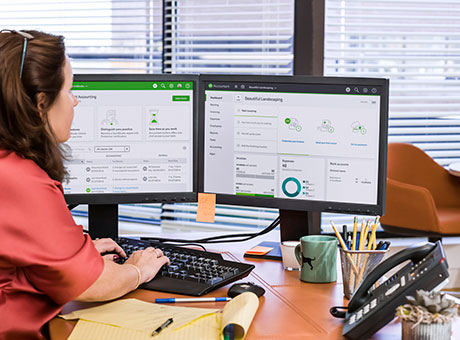Your balance sheet uses a standard framework to allow your investors to compare your financial health to that of other companies easily. Just by examining comparable balance sheets, investors can draw conclusions quickly. When you categorize the items your company that are worth money, the process is called classifying assets. For example, if you have a fleet of delivery trucks, those trucks are an asset. Accounts receivables are assets as well, because they represent what customers owe your company. Since your fleet of trucks and your accounts receivable are two different kinds of assets, you classify them in different categories to make sure your balance sheet is an accurate representation of your company’s financial health.

Classifying Assets on a Balance Sheet
Current Assets
The top section of a balance sheet reports all short-term, or current, assets. These items are listed based on how much cash they can generate if you sell them. Therefore, you should list cash and cash equivalents first. In general, your assets are short-term if you expect to reap the benefits of them within the next year. For example, you report your inventory as a current asset because your business probably intends to sell those goods within the next 12 months. Other common examples of current assets include account receivables, or the value of what customers owe you. Note receivables take the form of promissory notes that you expect to turn into cash at some time in the future. Prepaid assets, such as consulting fees, rent due to you, and insurance payments that people make to your business, are also current assets.
Short- and Long-Term Receivables
Receivables are a regular asset on your balance sheet. When you make a sale, your business either receives cash or extends credit to the customer. If your business extends credit to the customer, the income statement account increases, and the asset account receivable (the amount the customer owes you) also increases. Recording the receivables account on your balance sheet lets you track the amount someone owes you.
Receivables are either short-term or long-term. With short-term receivables, which are current assets, the client or customer generally pays you within a year. Long-term receivables, which occur when you extend credit to customers for more than a year, are classified as a non-current asset.
Non-Current Assets
The non-current assets section of your balance sheet focuses on the items of future benefit that are exhausted within one year. Although your small business still owns the right to use these assets, their expected life is greater than 12 months. For example, say you own a vehicle to use during operations. Although you plan to use the vehicle within the next 12 months, its useful life more than likely extends beyond this one-year period. For this reason, you classify a vehicle in a different category of assets. When classifying assets such as vehicles, you group them together with other assets that have long-term lives, such as buildings, land, equipment, and heavy machinery.
Other Assets
The classification of other assets refers to items in which the useful life is unknown or extremely variable. Although a benefit exists, it’s unclear when you plan on using the benefit of these assets. One common example of other assets is a deferred tax benefit . A deferred tax benefit occurs when you calculate a temporary difference between taxes on your books and actual income taxes. If you plan to owe less in taxes than you pay, this is a deferred tax benefit. If you plan to receive a deduction in your taxes at a later date, that’s also a deferred tax benefit.
External Benefits of Classifying Assets
Although these classifications may seem arbitrary, they’re useful to investors and lenders when they take a closer look at your company. Financial institutions, such as banks, look at your current assets to gauge your business’s ability to pay short-term obligations. Lenders typically compare short-term assets to short-term liabilities to assess how much cash you have on hand at any given time.
Investors also review your long-term assets to see if they’re likely to receive a return on their investment. Venture capitalists, private donors, and stock buyers all examine your long-term assets to determine if they want to put their hard-earned money into your business.
Internal Benefits of Classifying Assets
You can experience internal benefits of maintaining these separate categories on your balance sheet, especially when you want to analyze the financial health of your company. These different asset groups come in handy for ratio analysis of different aspects of your company’s operations. For example, dividing current assets by current liabilities returns the current ratio, a metric that indicates your comparative debt levels. This information is useful to know from a long-term planning standpoint as well a day-to-day operations perspective. The current ratio helps you determine what you need to do on a daily basis to achieve long-term success. The more information you have, the more accurate your financial reporting and analysis becomes.
QuickBooks Online keeps all of your financial information in the same place, letting you track expenses and income, run reports, and plan for next year’s budget. Keep your books accurate and up to date automatically. Change the way you manage your finances now.


